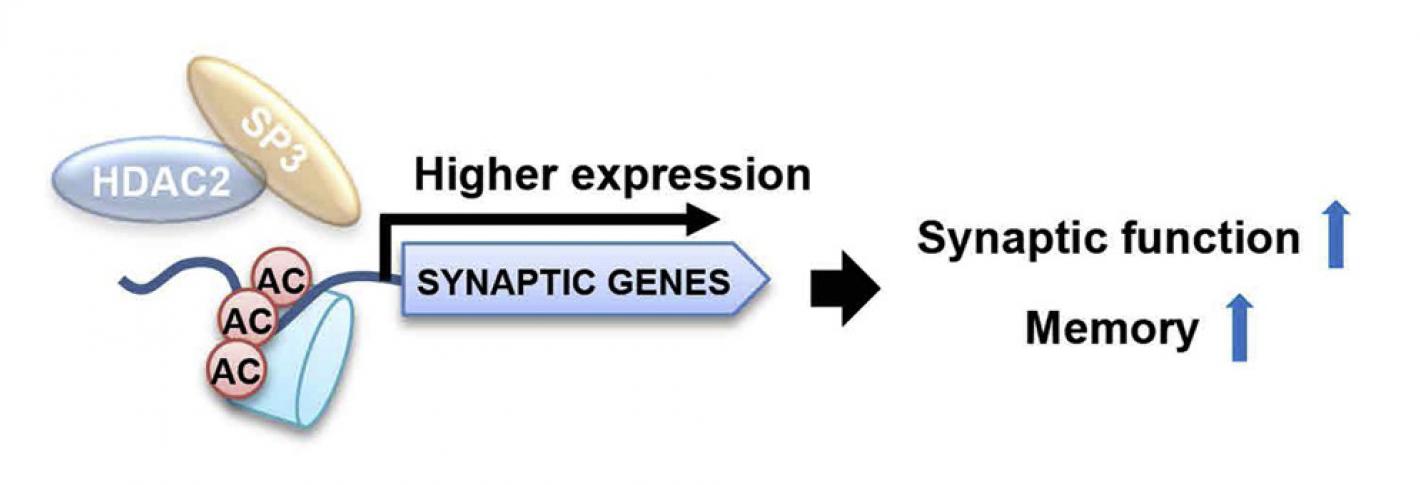Research in Li-Huei Tsai's Lab, beginning with a seminal paper in Nature in 2007, has called the neurodegeneration field’s attention to epigenetic regulation, which is the study of how cells access DNA’s instructions for “expression,” for instance to make proteins.
In that paper, the lab became the first to show that memory deficits in Alzheimer’s model mice could be rescued – recovering memories that would otherwise be lost – through the use of deacetylase HDAC inhibitors (which alter the structure of chromatin, which keeps DNA wound up until it is supposed to be accessed). In 2009 her group identified HDAC2 as the HDAC enzyme regulating the expression of neuronal genes supporting synaptic plasticity, learning, and memory and as the target of the inhibitors that were effective in mice. Li-Huei’s group has shown that HDAC2 itself is markedly increased in hippocampal neurons of human AD brains.
Laboratories around the globe are now working on HDAC2 inhibition, and newer results show that inhibition of HDAC2 is neuroprotective. Most recently her team found the protein Sp3 cooperates with HDAC2 and that deactivating Sp3 in AD-model mice had similar effects as inhibiting HDAC2 for restoring memory.
Above: A schematic of how blocking HDAC2 or SP3 can restore synaptic function and memory.


